Ramie Moth
Ramie Moth (Arcte coerula)

- What You Can Do: Report this species to 643pest.org or call 808-643-7378 (643-PEST) if seen anywhere in Hawaiʻi. If you do see Ramie moth, location, number of eggs/caterpillars found, and numbers of māmaki trees around/surveyed would be great information to include. Please take a few photos if possible. Caterpillars & eggs can be collected alive and brought to UH Mānoa. Please email [email protected] for details on where to drop off live specimens and to contact if found.
- “Ramie moth has been detected on Maui and Hawaiʻi Island. Larvae have been recorded in both residential areas and native forests. Further surveying will be conducted by the University of Hawaiʻi to identify additional locations where this pest may be found.” (CTAHR)
- Most recently it has been found on Oʻahu in 2024 in the Ewa Forest Reserve (Poamoho section).
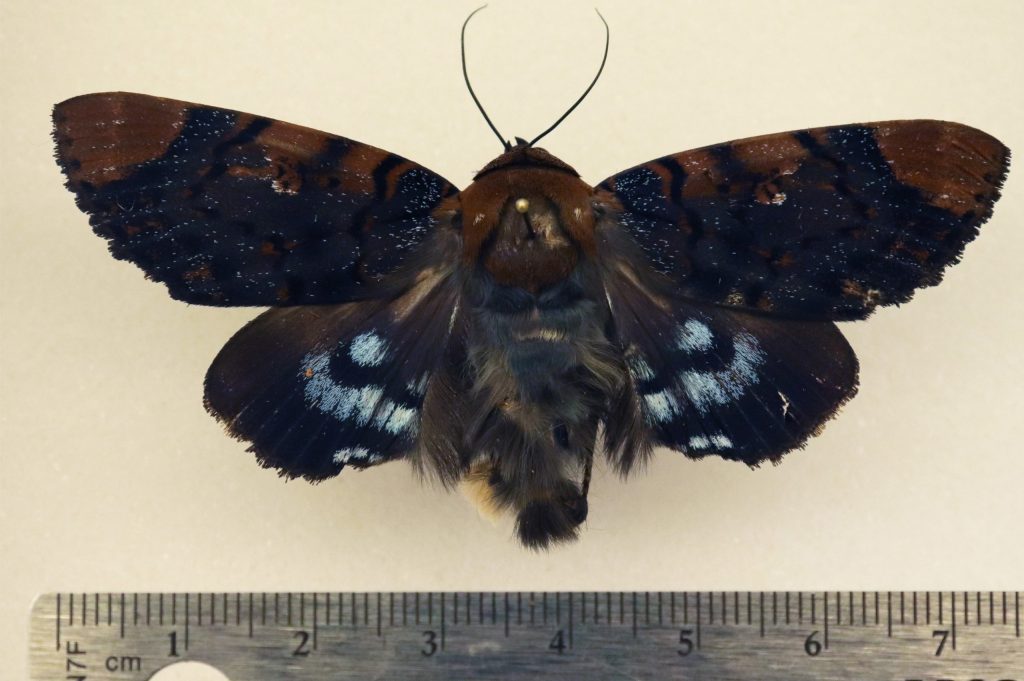
Ramie moth in centimeters
Photo credit above: HDOA
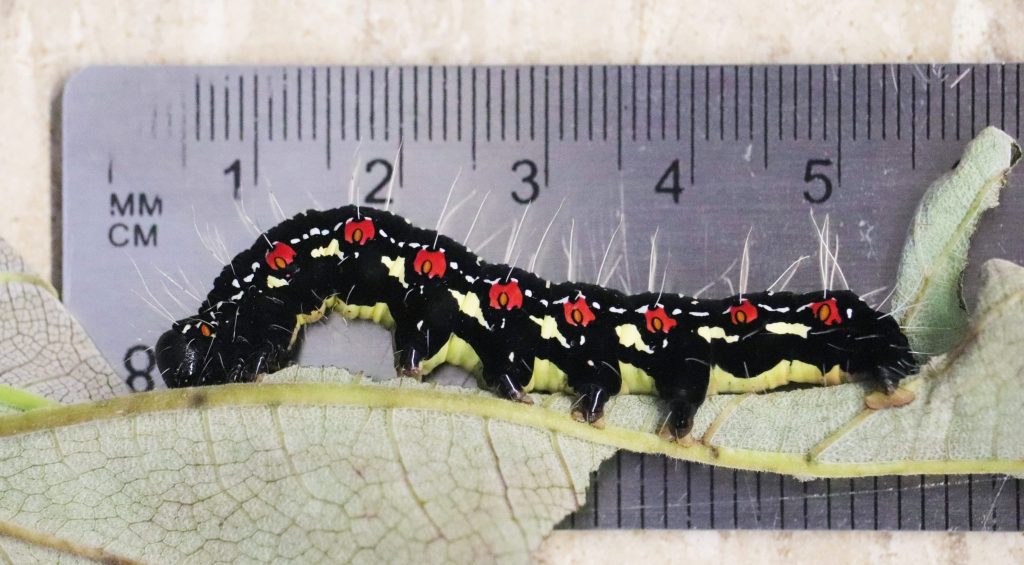
Ramie moth caterpillar, black morph
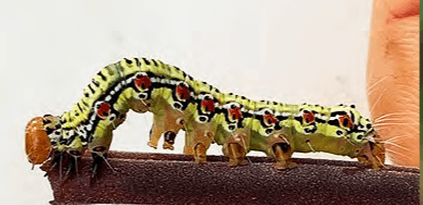
Ramie moth caterpillar, yellow morph
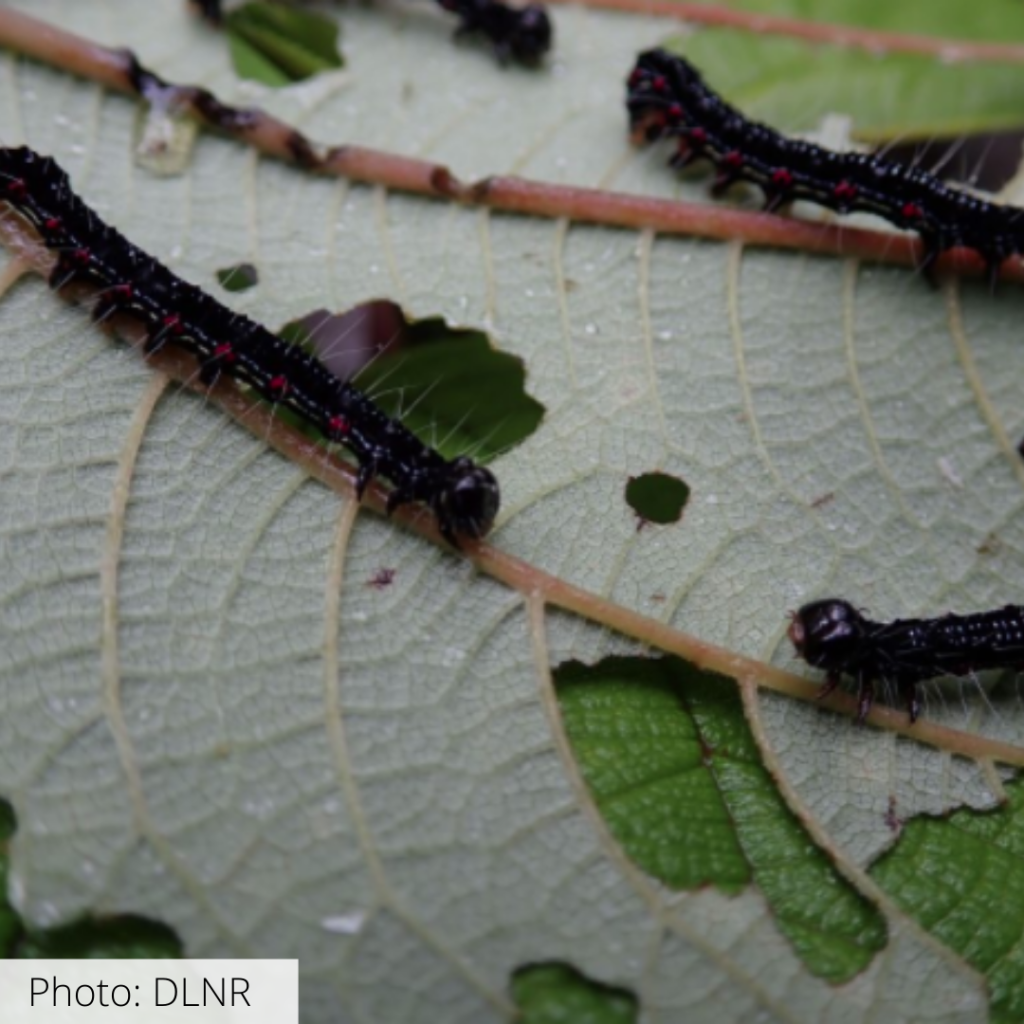
Ramie moth eating māmaki leaves
Photo credit above from top to bottom: Michelle Au, HDOA, DLNR
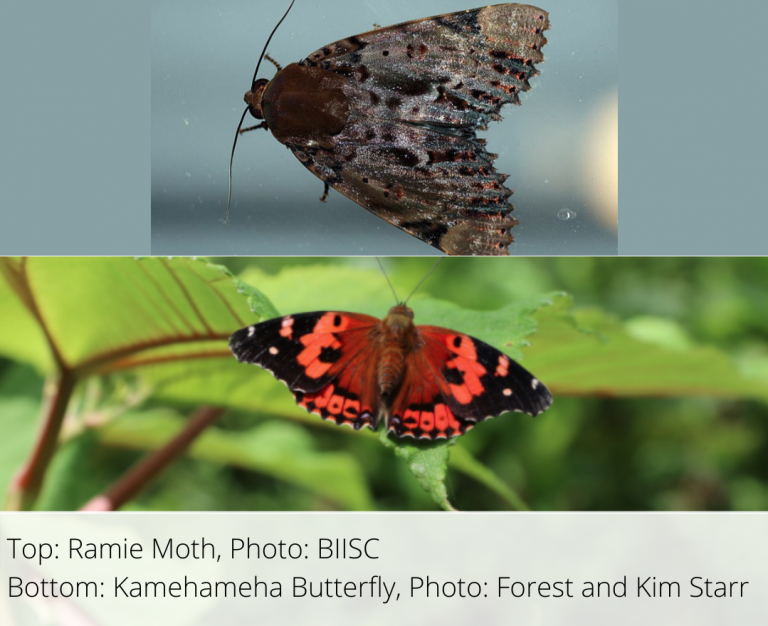

Kamehameha butterfly vs. Ramie moth:
- The Kamehameha butterfly is one of two species of butterfly that are endemic to Hawaiʻi. The Kamehameha butterfly looks similar to the Ramie moth so it’s important to be able to differentiate between the two, as to not kill an important native insect.
- “Although the butterfly is historically known from all the main Hawaiian Islands (Kauaʻi, Oʻahu, Molokaʻi, Lanaʻi, Maui, and Hawaiʻi), it is no longer found in some areas where it used to be common (e.g. Tantalus on Oʻahu), and it appears to be declining.” (CTAHR)
DESCRIPTION:
- The eggs of the Ramie moth are clear/white colored, circular (1 mm diameter), and laid on the underside of leaves.
- The younger larvae are green and black caterpillars. As they develop they become bright yellow and black with orange-red spots and thin white hairs.
- The caterpillar evolves into a large brown and black moth (65-90 mm wingspan).
- They are often found on or near plants in the nettle family, including the māmaki plant.
-
“Ramie moths are very distinct from other caterpillar species that feed on māmaki because of the aggressive defensive behavior the larvae exhibit. Early instar larvae were observed defensively dropping from leaves when disturbed and moving quickly between leaves on the plant. As later instars, the larva will rear up its head, thrash around, and regurgitate a green liquid to defend itself.” (CTAHR)
- In Hawai’i, it has been found on Maui and Hawai’i Island, and most recently in 2024 in the Ewa Forest Reserve (Poamoho section). Currently, the Ramie moth is not known to be present on any other islands.
- Please report sightings of this species if seen on any island.
IMPACTS:
- Ramie moth caterpillars feed on young and mature leaves of host plants, causing defoliation and severely impacting the plants health.
- They are a threat to the native māmaki plant (Pipturus spp.), a culturally and ecologically important plant that stabilizes streambanks and supports numerous native insects, including the Kamehameha butterfly.
- They also feed on the maʻaloa (Neraudia melastomaefolia), an endangered plant found only in Hawai’i that is on the verge of extinction.
ERADICATION & CONTROL METHODS:
CTAHR recommendations:
- Currently the best management strategy is continual monitoring of your plants and the removal or eggs and larvae when found.
- Eggs are usually clustered around a few plants so search near-by plants if eggs have been detected.
- If large amounts of feeding damage is observed on your māmaki leaves, check the area for caterpillars. Early instar larvae move quickly throughout the plant and can drop to the group and spread to neighboring areas.
- Monitoring should be done year around but we have noticed caterpillars are most abundant from December through May.
- There is very little information available on how to manage this pest. In Australia, botanical insecticides (such as neem, derris powder, pyrethrum), insecticidal soaps, and microbial products such as spinosad and Bacillus thuringiensis kurstaki have been used.
- However, these products are not labeled for use in Hawaiʻi on māmaki plants and are not recommended in Hawaiʻi as they will also impact the endemic Lepidoptera populations that feed on māmaki and other endemic Urticaceae.
- Currently, biological control is being explored as a management strategy.
WHAT YOU CAN DO:
- Report this species to 643pest.org or call 808-643-7378 (643-PEST) if seen anywhere in Hawaiʻi.
- Use management techniques above if you farm or have māmaki on your property.
- Learn to recognize the differences between the caterpillars of Ramie moth, Kamehameha butterfly, Udea stellata (another native species) and Green garden looper (invasive species). This is to make sure you don’t mistakenly kill native caterpillars. (See the differences here)
For more information
- New Pest Advisory – HDOA
- Ramie Moth – BIISC
- The Impact on Māmaki by Ramie Moth – MIISC
- New Pest of Māmaki – CTAHR
- Ramie Moth News Release – DLNR